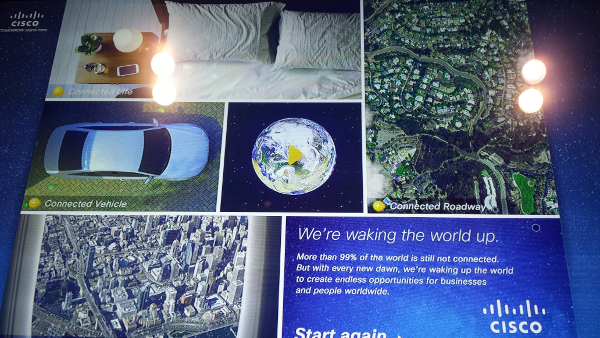I’ve just finished up a packed week dominated by Cisco’s CiscoLive! conference in Melbourne, Australia. I met a lot of customers, executives, and technical folk from Cisco, learned a bunch and had some fun.
In the background I’m developing some stuff about the event that will hopefully get published in more mainstream places than this blog. As a quick taste, here are some standouts:
I Get Application Centric Infrastructure
More on this later when I have time to blog in more detail, but after speaking to Joe Onisick (@jonisick) and Soni Jiandani, I think I finally understand Cisco’s ACI concept. Not just that, but I think it’s compelling, with some caveats.ACI takes a much broader view of the complexity problems of modern networking than some other approaches, and attempts to solve them in a new way. It takes the Service Profile concept from UCS and abstracts out one further level, encompassing networked services, not just server/compute services. If it extends out the way I believe it will, ACI will be able to manage complexity for a large range of devices in a way that makes sense to me.
It won’t be for everyone, and it doesn’t have to be in order to be successful. And I think it can co-exist with other technologies if customers choose to implement things in a different way.Cisco Can’t Sell Internet of Everything, Yet
The way Cisco is talking about the general vision of the Internet of Things/Internet of Everything isn’t working for me. It’s too generic, and doesn’t connect the dots between all these sensing devices and Cisco being, at heart, a networking company.
It can be done, but Cisco didn’t do it this week. Not explicitly. I was able to build a story for myself, but I had to work hard to get there. It’s related to my growing understanding of ACI, so I’ll cover it in more detail soon.
More Generalists Needed
Many of the discussions I had with Cisco execs came from a technical perspective. There was a real “build it and they will come” aspect to the underlying assumptions as I dug deeper into the conversation.
Similarly, customer execs tended to base their discussions on the specific problem domain they work in; GE spoke about improving the maintenance cycles of their gear by having more sensor data, for example. While that’s fine, and a 1% maintenance saving on expensive machines like jet engines and wind turbines is significant, it misses the larger point of what a bunch of interconnected devices can mean. This is just collecting more data about specific stuff, not connecting it with other information from disparate sources in order to detect emergent behaviour or analyse complex systems.
Ros Harvey, from Sense-T, was different. She’s not a technologist, so she has a much broader vision of what connected sensors can do. Many of the problems we’ll need to solve with the world of connected sensors are directly related to the blinkered, siloed approach to sensor data, and while Ms. Harvey doesn’t have all the answers, she has some, and is at least asking the right questions.
Make sure you check out their video explaining the concept of an economy-wide sensor network for Tasmania. It’s one of the best pieces of communications I’ve seen recently.




